●●● PAULING FILE products
ASM Alloy Phase Diagram Database (on-line product)

ASM International, Materials Park, Ohio-USA
2006-... (yearly updates)
Editor-in-chief: P. Villars
Section editors: H. Okamoto, I. Savysyuk (constitution), K. Cenzual (structures)
The Alloy Phase Diagram Database offers easy viewing of phase diagram details, crystallographic and reaction data in one screen shot. All the diagrams have been redrawn in a standardized user-friendly presentation. The Database contains more than 40'300 online diagrams for binary and ternary systems.
Distributor:

more information
Various options for license
ASM Materials Platform for Data Science (on-line product)
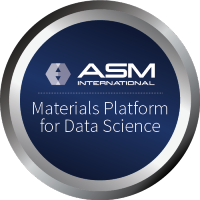
ASM International, Materials Park, Ohio-USA
2020-... (yearly updates)
Editor-in-chief: P. Villars
Section editors: I. Savysyuk (constitution), K. Cenzual and V. Dubenskyy (structures), R. Caputo (properties)
Software development: Tilde Materials Informatics, Germany
The ASM Digital Databases provide convenient access to the world’s largest collection of information and data on the composition, structure, properties, processing, performance, and evaluation of engineering materials. MPDS is the world’s largest and most comprehensive repository of inorganic materials data comprised of phase diagrams, crystal structures, and physical properties. The ASM Materials Platform for Data Science is the digital continuation of the PAULING FILE.
Distributor:

more information
Annually renewable subscriptions, single-user price 2200 $
AtomWork, Inorganic Material Database (on-line product)

NIMS, National Institute for Materials Science, Tsukuba, Japan
Editor-in-chief: P. Villars
Editors: K. Cenzual, J.L.C. Daams, F. Hulliger, H. Okamoto, K. Osaki, A. Prince
The data part of AtomWork is a collaboration between the National Institute for Materials Science (NIMS), Materials Phases Data System (MPDS) and the Japan Science and Technology Agency (JST). The Inorganic Material Database aims to cover all basic crystal structure, X-ray diffraction, property and phase diagram data of inorganic and metallic materials from main literature sources. The open data include 82'000 crystal structures, 55'000 material properties and 15'000 phase diagrams.
Distributor:
more information
Free of charge
AtomWork-Adv, Inorganic Material Database (on-line product)

NIMS, National Institute for Materials Science, Tsukuba, Japan
Editor-in-chief: P. Villars
Section editors: I. Savysyuk (constitution), K. Cenzual and V. Dubenskyy (structures), R. Caputo (properties)
AtomWork Adv. is an online database system which provides Internet users an easy way to search and access the up-to-date PAULING FILE data of phase diagrams (47'347 in 2024), crystal structures (379'736), X-ray diffraction patterns (689'445) and material properties (504'325) in an organically linked form. The content is updated on an annual basis. A free trial for 72 hours is available.
Distributor:
more information
Various options for license
Handbook of Inorganic Substances (handbook / e-book, approx. 2000 p.)
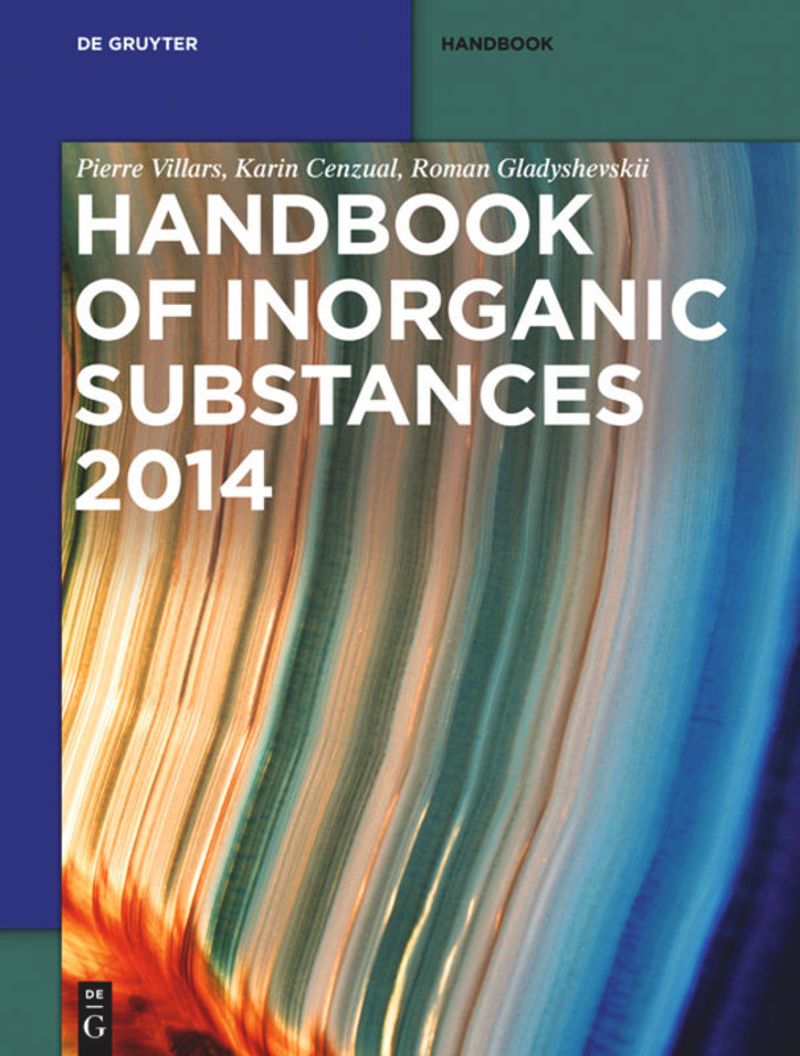
De Gruyter, Berlin, Germany
2012-2017
Editors: P. Villars, K. Cenzual, R. Gladyshevskii
The aim of the handbook is to provide researchers and students with a comprehensive compilation of crystallographically identified inorganic substances within one volume. The fourth release offers an overview of more than 100'000 different inorganic substances. Each substance is represented by a single row containing the chemical system in alphabetic order, chemical formula (and specification), structure prototype (Pearson symbol, space group number), Hermann-Mauguin symbol for the space group, standardized cell parameters, mineral name or structural family, color, density, a code indicating the level of structural studies, and the link to a data source listed in the Reference section.
Distributor:

more information
Indicative price: 320 EUR
Inorganic Substances Bibliography (e-book, approx. 6403 p.; also handbook up to 2014)
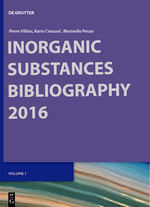
De Gruyter, Berlin, Germany
2012-2017
Editors: P. Villars, K. Cenzual, M. Penzo
By browsing 10'000'000 scientific publications (starting with literature year 1900) the editors of the PAULING FILE have selected some 200'000 publications containing data belonging to one of the following fundamental materials research fields: crystallographic structures (S), phase diagrams (C) and (to a less extent) the large field of intrinsic physical properties (P). The aim of the handbook is to provide researchers and students with a comprehensive compilation of scientific publications on inorganic substances. Each distinct combination chemical system - literature reference is represented by one row containing selected information: source, codes for research fields, first author, title.
Distributor:

more information
Indicative price: 380 EUR
Landolt-Börnstein, III-43, Crystal Structures of Inorganic Compounds (handbook, 11 vols., approx. 5500 p.)
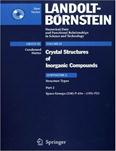
Springer, Heidelberg, Germany, 2004-2012
Editors: P. Villars, K. Cenzual
Contributors (Part 11): J. Daams, R. Gladyshevskii, O. Shcherban, V. Dubenskyy, V. Kuprysyuk, I. Savysyuk, R. Zaremba
Each subvolume contains complete crystallographic data sets (including atom coordinates) representing about 7'000 distinct structure types. The crystallographic data are standardized and accompanied by different remarks, information about the atomic environments, and a brief description of the main structural features. 1'000 drawings of selected prototypes are included. The 11 volumes published up to 2012 contain data for space groups 230 to 123 and are also available in online version within SpringerMaterials.
Distributor:

more information
Materials Platform for Data Science (on-line product)

MPDS (Materials Phases Data System), Switzerland
2018-... (yearly updates)
Editors: Pierre Villars
Section editors: Ihor Savysyuk (constitution), K. Cenzual and V. Dubenskyy (structures), Riccarda Caputo (properties)
Software development: Tilde Materials Informatics, Germany
The online platform MPDS (Materials Platform for Data Science) provides all the PAULING FILE data online via two access interfaces: browser-based graphical (GUI) and application programming (API). The GUI is intended for traditional research, whereas the API serves various software integrations and data-mining scenarios, as described below. The MPDS API adheres to the principles of representational state transfer (REST) and presents all the PAULING FILE data in a developer-friendly, machine-readable way, using opened formats, such as CIF and JSON.
more information
Various options for license
PAULING FILE, Binaries Edition (off-line product)
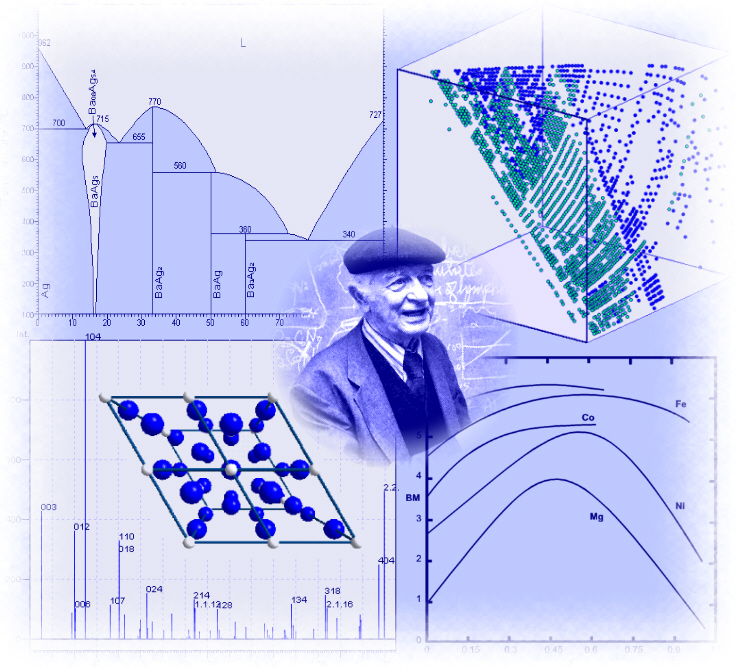
ASM International, Materials Park, Ohio-USA, 2002
Editor-in-chief: P. Villars
Section editors: K. Cenzual, J.L.C. Daams, F. Hulliger, T.B. Massalski, H. Okamoto, K. Osaki, A. Prince
Project coordinator: S. Iwata
Software development: Crystal Impact
The first off-line version of the PAULING FILE is limited to binary compounds. It contains 8'000 phase diagrams covering 2'300 binary systems, 28'300 structural data sets for more than 10'000 different phases, 3'000 experimental and 27'000 calculated diffraction patterns, and around 17'300 physical property entries. Thanks to internal links Crystal Structure, Physical Properties and Phase Diagram entries referring to the same phase can be retrieved together. The test tool Discovery for searching for hidden correlations between compound properties and elemental properties is provided with the database.
Out of sales
Pearson's Crystal Data (off-line product)

ASM International, Materials Park, Ohio-USA
2007-... (yearly release)
Editors: P. Villars, K. Cenzual
Software development: Crystal Impact
The seventeenth release of Pearson's Crystal Data (2023/24) contains 395'000 structural data sets for some 165'000 different phases. All data sets with published coordinates, and 80% of the data sets where only cell parameters were published, have been assigned a structure type: 256'000 data sets with published atom coordinates, 115'000 data sets with assigned atom coordinates, 24'000 data set with only cell parameters. Atomic environments have been defined for the first category. The crystallographic data are presented as published and standardized, and are accompanied by experimental details and remarks. In addition, the product contains: 21'700 experimental and 375'000 calculated diffraction patterns; 68'000 descriptions of cell parameters as a function of temperature, pressure, or composition, 13'000 plots; 100'000 unit cells extracted from plots vs. T or p; links to the publication, PDF5+, ASM Phase Diagram Database, SpringerMaterials. The software offers numerous possibilities to retrieve and process the data. The 2024/25 release will be the last off-line edition.
Distributors:
more information ASM
more information CI
One-year licenses from 530 EUR, possibility to download demo version
●●● other products containing PAULING FILE data
MedeA Pearson (off-line product)

Materials Design, California-USA
With MedeA, the setup of atomistic models is straightforward and intuitive, as you can directly access experimental and calculated structure data gathered over decades.The database MedeA Pearson is based on PAULING FILE data in Pearson’s Crystal Data (see above). It encompasses more than 300’000 structure records of more than 95’000 different phases and is the world’s largest critically-evaluated, ‘non-organic database’. With a particular focus on alloys and intermetallics, MedeA Pearson provides exhaustive coverage of crystal structure data for inorganic compounds obtained from neutron diffraction and X-ray diffraction (XRD) powder diffraction measurements.
Distributor:

more information
Powder Diffraction File PDF-5+ (off-line product)

International Centre for Diffraction Data, Pennsylvania-USA
2004-... (yearly updates)
PDF-5+ is an ICDD product for phase identification and quantification. The 2024 edition contains 442,600+ inorganic and 623,000+ organic entries. It combines the world’s largest sources of inorganic diffraction data from crystals and powders into a single database. The result is a comprehensive collection of inorganic materials, produced in a standardized format that can be rapidly searched for unknown phase identification.
Distributor:

more information
Various options for license
SpringerMaterials (on-line product)
Springer, Berlin, Germany, 2008-... (yearly updates)
Based on the well-known series of Landolt-Bцrnstein Handbooks, SpringerMaterials allows materials scientists to identify materials and their properties. The PAULING FILE provides crystal structure data, phase diagrams and physical property data to the section Inorganic Solid Phases on a yearly basis.
Distributor:

more information
Various options for license

